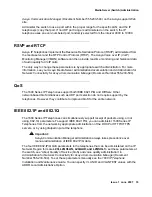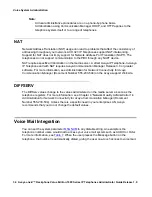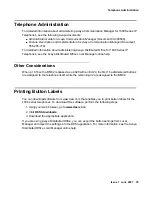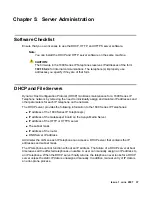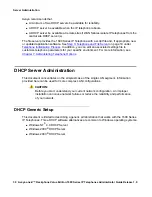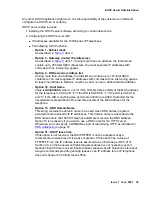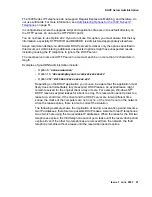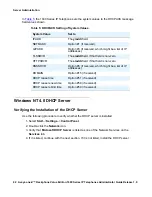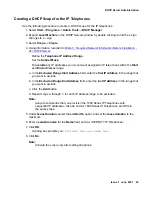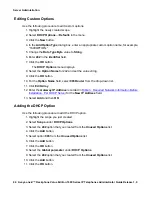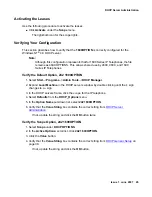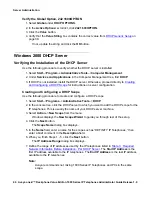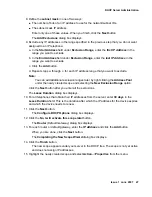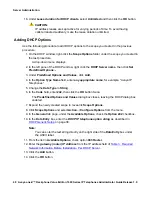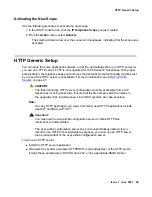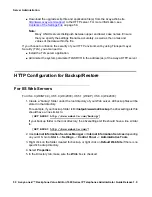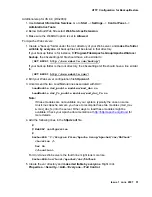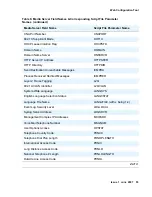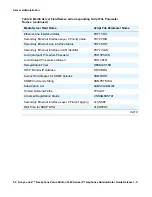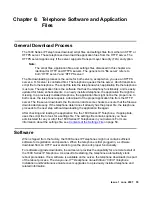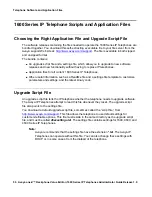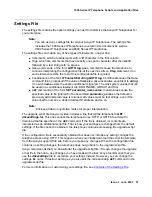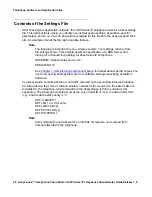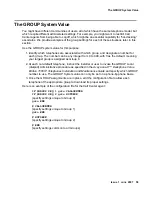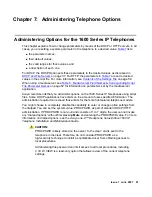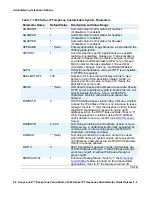
DHCP Server Administration
Issue 1 June 2007
47
8. Define the
subnet mask
in one of two ways:
●
The number of bits of an IP address to use for the network/subnet IDs.
●
The subnet mask IP address.
Enter only one of these values. When you finish, click the
Next
button.
The
Add Exclusions
dialog box displays.
9. Exclude any IP addresses in the range specified in the previous step that you do not want
assigned to an IP telephone.
a. In the
Start Address
field under
Exclusion Range
, enter the
first IP Address
in the
range you want to exclude.
b. In the
End Address
field under
Exclusion Range
, enter the
last IP Address
in the
range you want to exclude.
c. Click the
Add
button.
d. Repeat steps a. through c. for each IP address range that you want to exclude.
Note:
Note:
You can add additional exclusion ranges later by right clicking the
Address Pool
under the newly created scope and selecting the
New Exclusion Range
option.
Click the
Next
button after you enter all the exclusions.
The
Lease Duration
dialog box displays.
10. For all telephones that obtain their IP addresses from the server, enter
30 days
in the
Lease Duration
field. This is the duration after which the IP address for the device expires
and which the device needs to renew.
11. Click the
Next
button.
The
Configure DHCP Options
dialog box displays.
12. Click the
No, I will activate this scope later
button.
The
Router
(Default Gateway) dialog box displays.
13. For each router or default gateway, enter the
IP Address
and click the
Add
button.
When you are done, click the
Next
button.
The
Completing the New Scope
Wizard
dialog box displays.
14. Click the
Finish
button.
The new scope appears under your server in the DHCP tree. The scope is not yet active
and does not assign IP addresses.
15. Highlight the newly created scope and select
Action
-->
Properties
from the menu.

